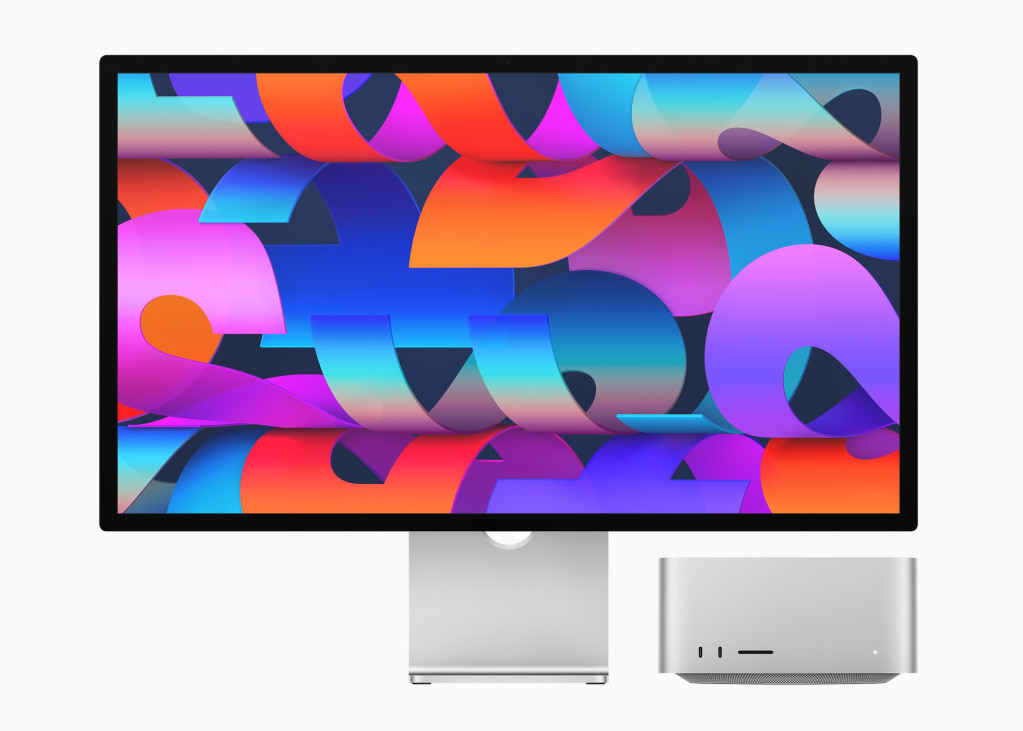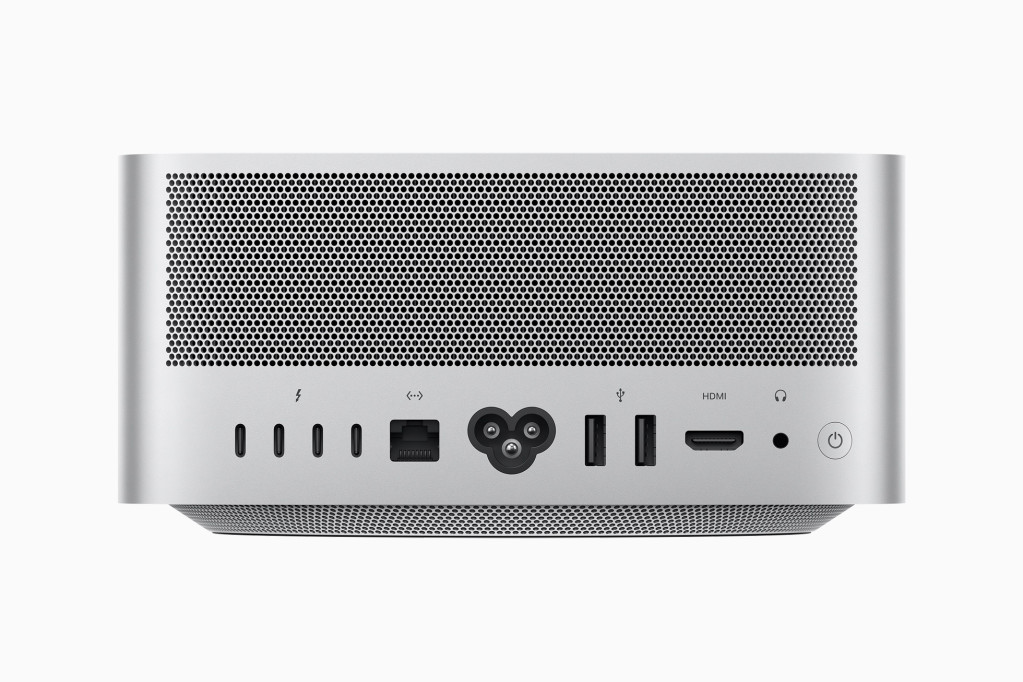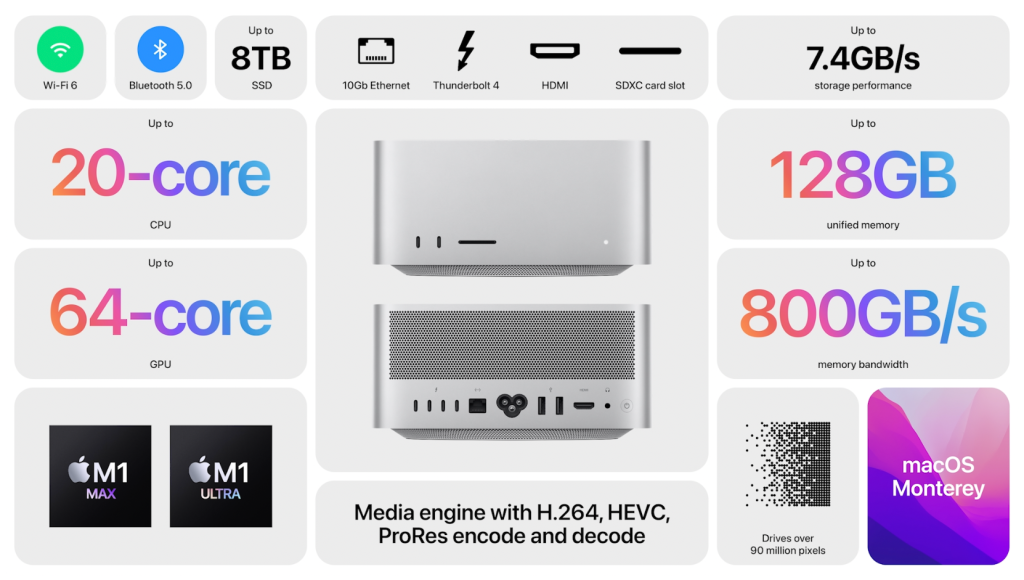At last, Apple again has a full range of choices for desktop machines. But can the Mac studio woo away music and visual customers from the MacBooks Pro? Let’s have a look.
Short version: the Mac Studio is something new. It’s not an expanded Mac mini. It’s the highest-end Apple Silicon currently available, in a box that just delivers that power (CPU, graphics, machine learning, fast RAM) and some fast ports in a small space.
And that fills a significant niche.
In case you missed it and want some rapid-paced Apple reality distortion, here you go. (Ah, it does bring back some sweet memories – hey, maybe Bungie can ship Destiny for Mac and we’ll finally come full circle. Ahem. Seems so far they only got as close as Mac and Cheese.)
Shortly after resuming control of Apple in the 90s, Steve Jobs famously came up with a simple grid of products people wanted. His intuition was spot on (and cleaned up a real mess), and it holds up even in 2022. Some folks want a desktop machine, some want something portable. Some want the basics, some want more performance. Some want their desktop to be an all-in-one display, and some prefer those to be bought separately.
For a long time, there’s been a noticeable hole. If you wanted desktop and high performance, and especially in a standalone box, Apple had an option that was priced like a high-end workstation – and out of reach for most individual artists.
The Mac Studio fills that gap. Yes, it looks like a really tall Mac mini. But the better way to think of this is that what you’re buying in either box is an optimized package of computational power, reduced to its most efficient form, with all the components working together. That makes it the opposite of the offerings on the PC side, which are built around customization – and demand some tradeoffs and produce some complexity as a result.
Here’s what you get from the Mac Studio:

Ports. Four Thunderbolt 4 / USB 4 ports, one ethernet, 2x USB-A, one HDMI, minijack stereo audio. That’s the same as the current-gen Mac mini, except the mini only has 2x Thunderbolt.
There are also two USB-C ports (10 Gbps). Plus on Ultra –
Ports (Ultra model). Apple quietly adds extra front-panel ports on the higher-end model – two Thunderbolt 4 ports (40 Gbps), in addition to the others.
M1 Max – 10-core CPU, up to 32-core GPU, up to 64GB unified memory, 400GB/s bandwidth or
M1 Ultra – 20-core CPU, up to 64-core GPU, up to 128GB unified memory, 800GB/s memory bandwidth.

It’s funny to see some folks still longing for a tower with slots in it – it’s just tough to shake that idea of what makes something “pro,” basically, after Apple creating that image in the 90s and 00s, or comparison with PC towers. But on the M1 Max alone, you can run up to 5 displays.
The M1 Max is already a massively powerful architecture, though I think buyers will want to decide whether they want it in this box or would rather shell out for a higher-end MacBook Pro so they can take it everywhere. And it does really well at video, especially with optimized apps – 9 streams of 8K ProRes video playback is the feature Apple is touting.
The M1 Ultra can manage 18 streams of 8K video.

Who is this for?
As video machines, these things look reasonably unassailable, especially once you consider you’ve got your choice of video apps. (Premiere? Final Cut? Resolve? It’s up to you; they’re all Apple Silicon-optimized now.)
And that’s been the case for audio. Frankly, you can get a ton of performance out of even the entry-level M1 Mac mini, though that $1999 price point desktop looks like a serious sweet spot – especially since you can forego Apple’s (very beautiful) matching display and still get something pretty nice.
The big question mark remains 3D work and other higher-end production. Apart from the fact that gaming still dominates on the PC side – and thus impacts anyone working in that industry – the toolchains there are still fairly PC-centric. And since people doing this work don’t care about fans switching on the way we care in audio, there are a lot of very tasty price-performance offerings on the PC side.
Apple still isn’t showing off benchmarks for some of those use cases, either. They’re absolutely touting computation and video – even one app from NASA – but you’ll see they don’t talk much about rendering or things like raytracing, because this just isn’t that machine. That does mean what they have in store for the refreshed Mac Pro could get interesting.
My PC versus Mac advice is simple: if you’re doing gaming (sorry, Apple), or you’re tending to compare Mac and PC, or asking questions like “where are the slots,” I honestly think you probably should be looking at the PC side and comparing there. Apple’s whole edge is really about focus, so there is some natural sorting of customers both directions. Some folks are stuck in some 1990s platform comparison that doesn’t really fit now.
The weird wrinkle to this is, some folks are anticipating a VR offering from Apple soon and speculate that the Ultra architecture is built to support it. That’s possible. But… let me put it this way, having been in tech a while now, the number of times that you can make a smart investment by predicting something in the future you haven’t seen yet are around none. (Got a Brownian motion source handy and want to power up your infinite improbability drive?)
For audio or video, though, this is easier.
As a basic studio machine, DAW workhorse – the M1 Mac mini is already great, especially for a project studio or lab station. It can handle even a fair range of streaming and video editing, too.
If you want to invest in a primary system, a $1999 desktop with an M1 MAX in it is just terrific. Mid-range is typically where your best price balance is from almost anyone, doubly so from Apple.
And that still gives you room to grow if you want to handle a massive studio session or pile on some absurd number of plug-ins or do some more advanced play with video, streaming, visuals, or, yeah, even weird machine learning experiments.

Duo or solo-to-go, and which specs?
It’s just… eesh. Yeah, if I had any portability desire at all I would be looking at the 14″ MacBook Pro for US$2499. No, it isn’t as fast as the $1999 Studio, but it’s still spec’ed out well enough for the vast majority of what you’d throw at it. And I know we have wars and pandemics raging all over the place, but you still might occasionally walk out your front door.
But yeah, if your on-the-road workflow is simpler, then you could in fact do the entry-level Mac notebook and make the desktop investment to get the faster chip.
So that’s likely to be the breakdown we see. I am seeing more interest in the desktop solution, with a second machine for mobile, than I can recall in recent memory. Maybe the pandemic changed how folks work. Probably it’s more to do with, finally Apple lets you choose yourself instead of choosing for you with their model and price options.
There’s a lot of talk about how fast the hard disks are on the new Mac devices. But actual developers I’ve talked to – and first-hand tests on both the entry-level mini and higher-end MacBook Pro – suggest that you still need RAM. At least the 16GB minimum spec in this case is reasonable; I would actually avoid the 8GB mini. 32GB is a sweet spot for most folks.
1TB is a good SSD choice. Mike Wolf of Wolfcare here in Berlin spotted something I had forgotten about – drives 2TB and up reach speeds of up to 7.4GB/s. The smaller ones are at a (still darned fast) 5GB/s.
Another nice take on this from our friends / people covering that other DAW so I don’t have to over at the expert sites (hi Russ!):
New Mac Studio Announced – The Machine Studios Have Been Waiting For [Pro Tools Expert]
Also a good read – and an indication of how different the Ultra is, given it needs a big heat sink:
Apple explains why the M1 Ultra-equipped Mac Studio is two pounds heavier [The Verge]
More:
Apple unveils all-new Mac Studio and Studio Display [Apple Newsroom]
https://www.apple.com/mac-studio/
And previously on “Your Life in Macintosh”: